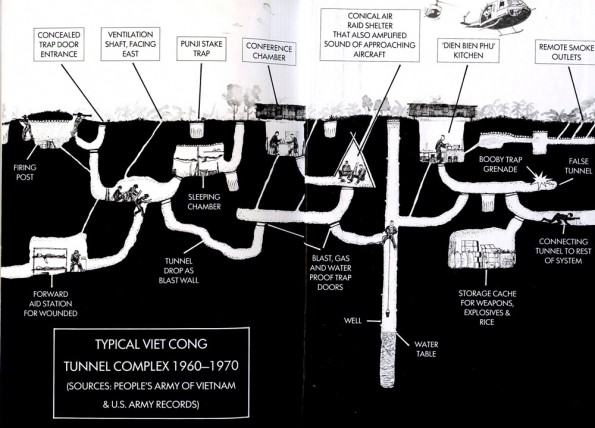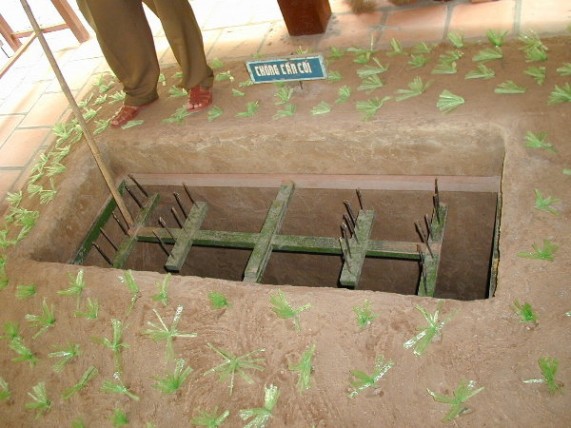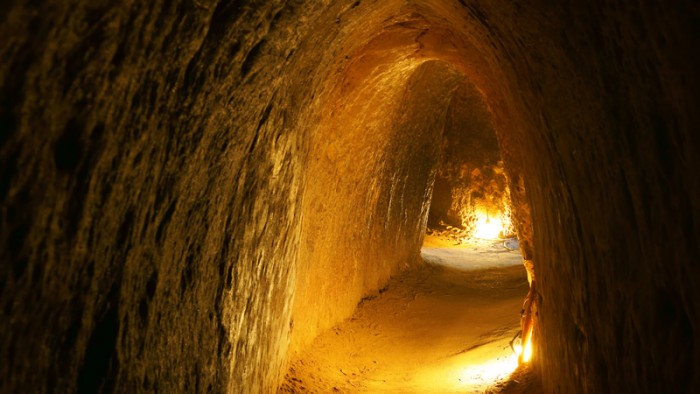Have you heard of Vietnam’s ‘Cu Chi’ tunnels? Well here’s it!
The American soldier tried to squeeze into the tiny opening on the ground. It was difficult as his shoulders were too broad. But, he managed to squeeze in, only to find himself not able to stand and in a dark place.
He took out his flashlight and tried to make his way through the dark, moving inch-by-inch, and cautiously keeping an eye for booby traps and cornered Vietcong soldiers.
These soldiers were called “tunnel rats”, as they were trained specially to explore these tunnels carrying only a knife, a gun, a flashlight and a piece of string.
The tunnels were known as “the Cu Chi tunnels” – a network of tunnels running underground for about 250 kms in the district of cu chi in Vietnam. These networks of tunnels extended 30 kms to 40 kms upto Ho Chi Minh City, named after their famous leader.
These tunnels were made over a span of 25 years and using bare hands and simple tools by the Vietnamese residents. Its construction had begun in the 1940’s to protect the Vietnamese residents from French airstrikes and later expanded in the 1960’s to conduct “guerilla warfare” against the U.S soldiers.

During the war against the US, these tunnels were mainly used to hide from the soldiers. The entrance to the tunnels cannot be found easily, as they have been made to camouflage to the ground. The only people who knew the places of entrances, areas of booby traps, hiding spots were the Vietnamese soldiers and residents themselves.

The entrances were small as the Vietnamese themselves were short in height, as a result, the Americans had a hard time getting into the tunnels. Even if the Americans had entered the tunnels, it was pitch dark and the areas were set up with various booby traps and cornered Vietcong soldiers were stationed there to get rid of any intruder.

The tunnels had all other general facilities as well, such as, hospitals, classrooms, dormitories where they could rest, kitchens, ammunition dumps, areas to convene meetings, etc.
The smoke outlets were stationed at remote areas to mislead the American soldiers. There were camouflaged air inlets placed to allow air flow to the Vietcong.
During day time, the Vietcong would rest or work in the tunnels and at night they would come out to attack the soldiers, tend to their crops or collect resources.
Life in the tunnels was hard as there was due to limited air supply , food and water. At times of bombing, the Vietnamese would have to remain underground for a long time.
But people also led simple lives in these tunnels, with marriages taking place, people would fall in love, children would try to play, etc.
The cu chi tunnels today, are made a war memorial in Vietnam.
Also read:
www.folomojo.com/conspiracy-theories-what-really-happened-to-netaji- subhas-chandra-bose/
This article was written by Deepak Venkatewaran, Abacus Montessori, Chennai

OMG-inducing, share-compelling, like-attracting, clutter-breaking, thought-provoking, myth-busting content from the country’s leading content curators. read on...
